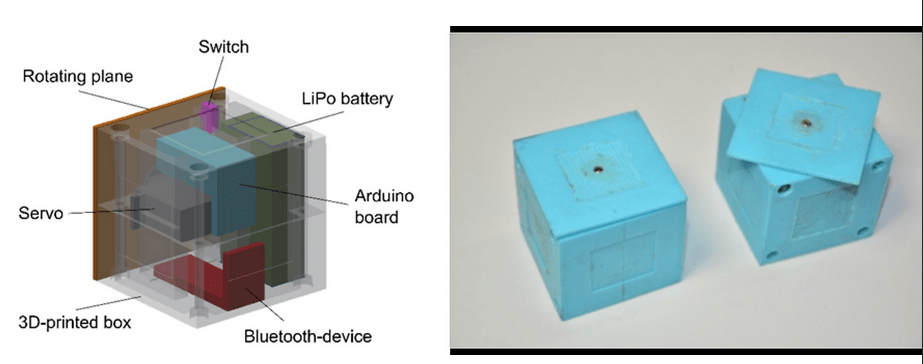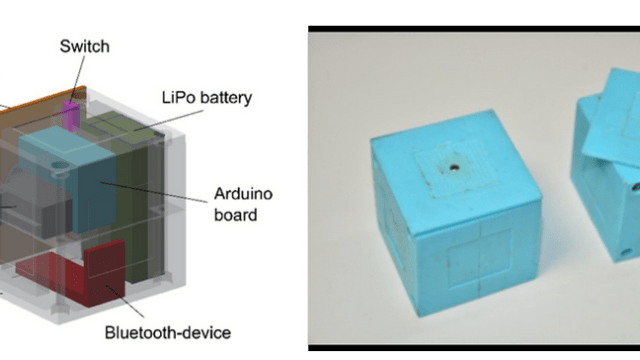Darwin probably didn’t expect basic principles of evolution to apply to machines, but here we are: Researchers have created a “mum” robot that independently reproduces “children,” passing beneficial features along to the next generation.
The experiment was carried out at the University of Cambridge in collaboration with ETH Zurich, and the results were published today in the journal PLOS One. A mother bot (a big robotic arm) designed, built, and tested “generations” of ten “kids”: tiny, cube-shaped bots. The mother used what it observed in each experiment to churn out even better-performing offspring the next go-around. (That generational language is a little tortured, huh?)

The complex anatomy of the robotic “children” from the study. Credit: PLOS One
The baby bots were tested on how far and quickly they could travel on a table in a given time. At the end of each round, the most successful child continued to the next round intact, while the lesser performing ones were replaced. The robotic arm designed and built new progeny to compete in the race, this time with slightly different shapes and motor commands, on the spot. Each generation got faster and faster.
This is a significant accomplishment, since one of the main challenges for roboticists — arguably the main challenge — is to make robots that can adapt to new situations on the fly, instead of just churning out items as repetitive tasks on an assembly line, for instance.
The goal here is to get robots to build even better robots than humans can. The research treats robots as a living species: “Natural selection is basically reproduction, assessment, reproduction, assessment and so on,” said Dr. Fumiya Iida, who led the study. “That’s essentially what this robot is doing — we can actually watch the improvement and diversification of the species.”
This particular experiment is dabbling in “evolutionary robotics,” an emerging arena in which robots are built without human help. And like in nature, their physical bodies adapt to thrive in their environments over time.
This kind of brilliant mechanical Creator leaves us increasingly dumbstruck. Robots, meanwhile, are only getting smarter all the time.
